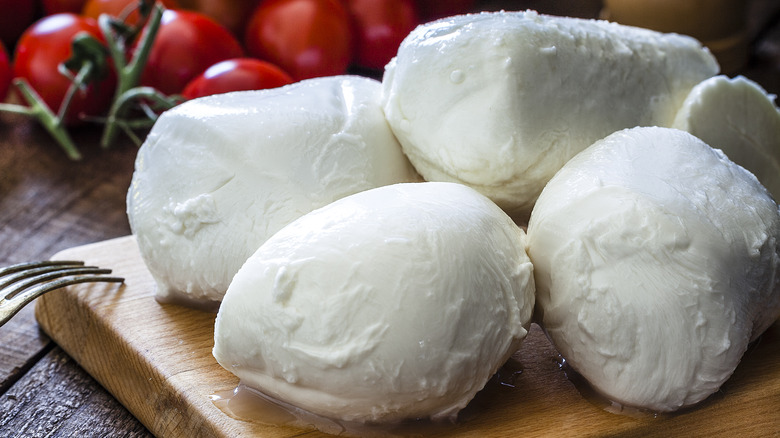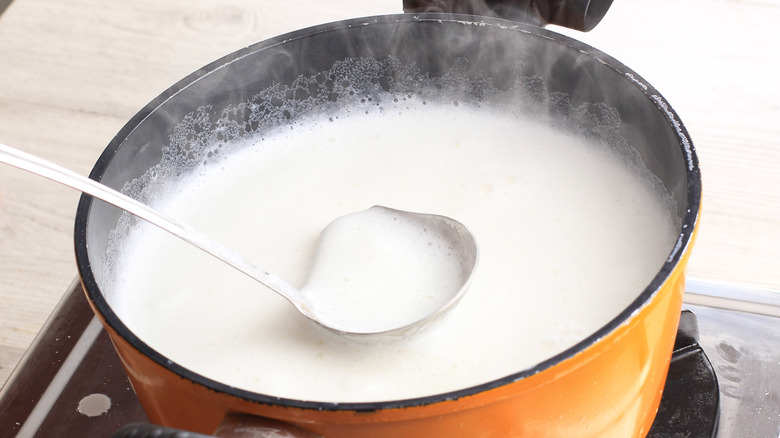What Temperature Should You Heat Milk At For Homemade Mozzarella?
Many people probably buy cheese at the store without ever thinking they could make it on their own. Even if they consider it, they might think the process is too difficult and shouldn't be attempted by regular home chefs. The truth is, though, making cheese isn't as hard as you might expect. Plus, you're in control of the entire process, and you get to handpick the ingredients. Even better, once you learn the basics, little tweaks and variations are all it takes to make as many different types of cheese as you can imagine. These variables include the type of milk you use, the heating temperature, and the moisture content, among other factors.
If you're interested in making mozzarella cheese, for example, you need to heat the milk so as to create an environment where lactic acid bacteria can thrive. Without this, the cheese can't properly ferment. Depending on the recipe you use, you may experience some variation when making mozzarella, but at the low end, you should hit 90 degrees. Your upper limit shouldn't exceed 115 degrees.
Tips for heating milk to make at-home mozzarella
Especially when you're first learning how to make cheese, you need to ensure all your measurements are precise; as such, if the particular recipe you're following instructs that you heat the milk to 90 degrees, you should do so. The most effective way to measure the temperature is to invest in a cheese thermometer, as a candy thermometer won't be suitable. Fortunately, cheese thermometers are generally inexpensive and will help you work with certainty.
When making mozzarella cheese, warm the milk slowly. Above all, you don't want to overshoot your target temperature, which can easily occur if your heat setting is too high. If you do end up overheating or scalding the milk, the cheese likely won't turn out as expected.
If your milk isn't forming into curds after you heat it to 90 degrees, experiment with slightly higher temperatures. Gradually increase the heat five degrees at a time to find the optimal temperature for your recipe.

